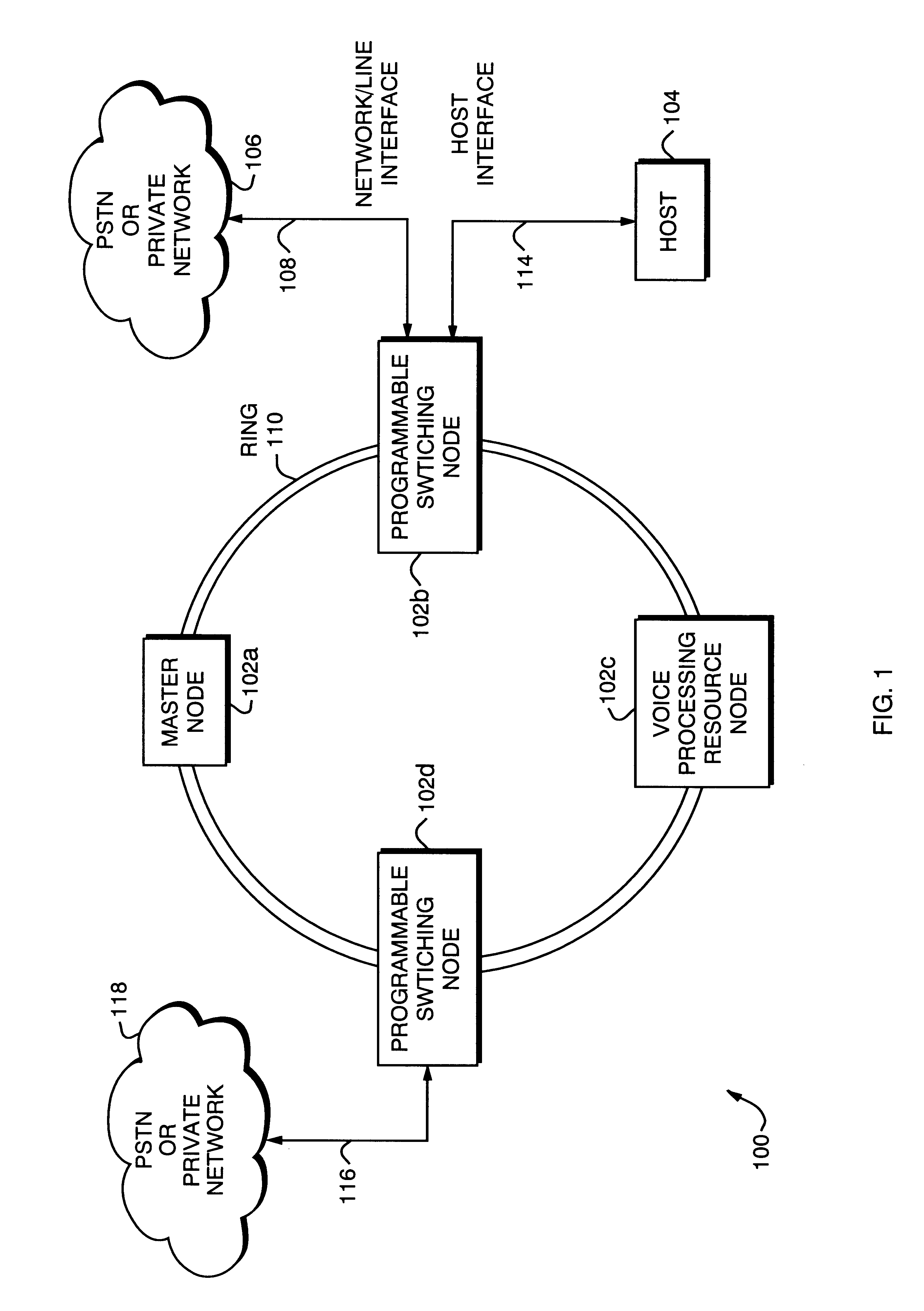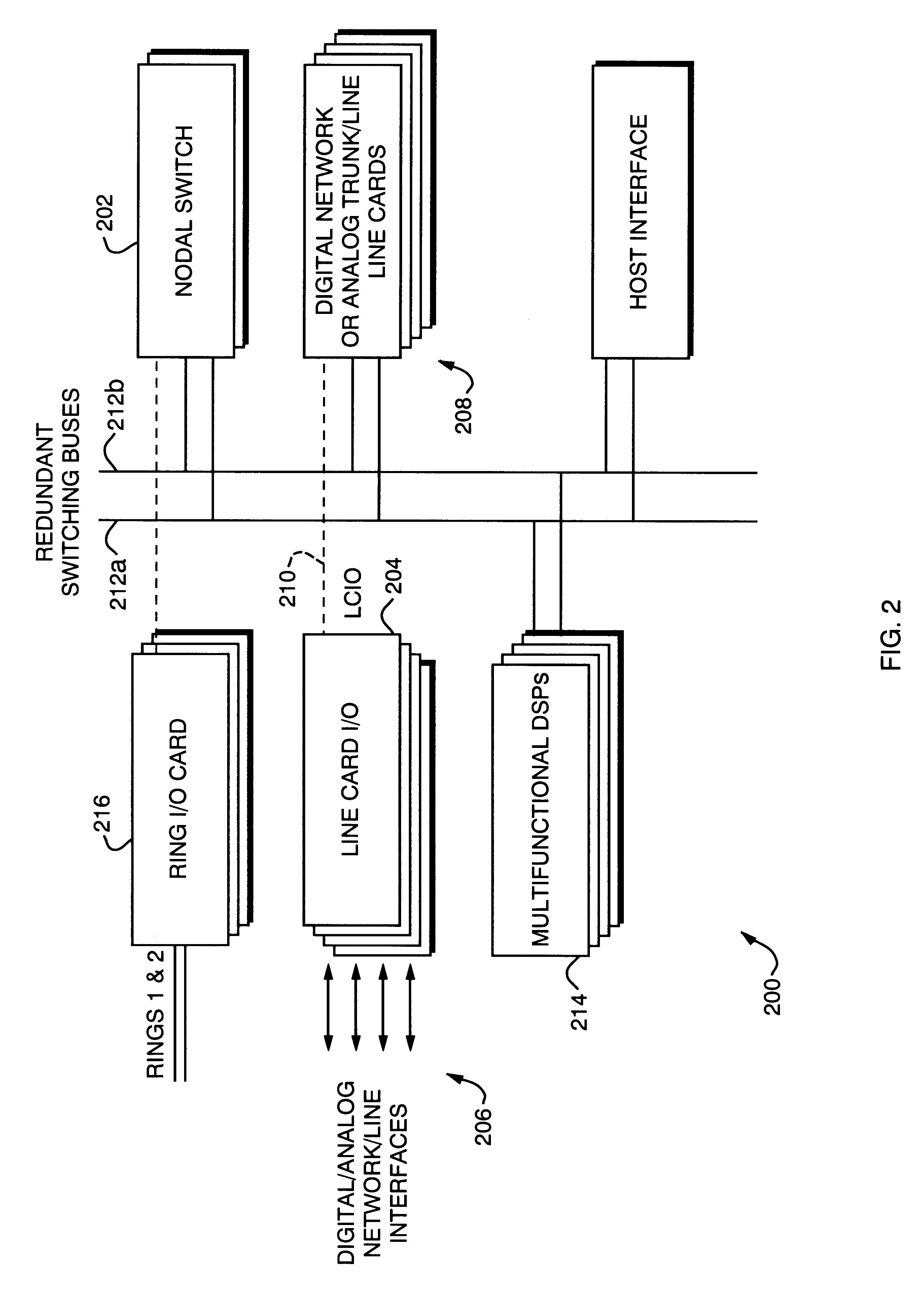Distributed network synchronization system
a distributed network and synchronization technology, applied in the field of telecommunications, can solve the problems of increasing the relative delay in the network, exacerbate the problem, and the ring latency is becoming the largest contributor to the reduction of performance in the distributed network system
- Summary
- Abstract
- Description
- Claims
- Application Information
AI Technical Summary
Benefits of technology
Problems solved by technology
Method used
Image
Examples
Embodiment Construction
A. System Environment
FIG. 1 shows a large capacity, expandable, fully programmable telecommunications switching network system 100. The network system 100 includes a series of programmable nodes 102 interconnected by a ring-architecture, inter-nodal network 110. The programmable nodes include a master node 102a, programmable switching nodes 102b, 102d, and a voice processing resources node 102c. A host link 114 connects node 102b in communicating relationship with a host computer 104. Nodes 102a, 102c and 102d may be controlled by host computer 104, whether by additional host links to such nodes, by passing control information over inter-nodal network 110 or by separate host devices. Although only a single host computer 104 and host link 114 are shown for purposes of improved clarity, use of a local area network (LAN) to provide host / node communications permits multiple hosts to control the system 100 (or parts thereof) by configuring each host as a "client" and each node as a "serv...
PUM
 Login to View More
Login to View More Abstract
Description
Claims
Application Information
 Login to View More
Login to View More - R&D
- Intellectual Property
- Life Sciences
- Materials
- Tech Scout
- Unparalleled Data Quality
- Higher Quality Content
- 60% Fewer Hallucinations
Browse by: Latest US Patents, China's latest patents, Technical Efficacy Thesaurus, Application Domain, Technology Topic, Popular Technical Reports.
© 2025 PatSnap. All rights reserved.Legal|Privacy policy|Modern Slavery Act Transparency Statement|Sitemap|About US| Contact US: help@patsnap.com



